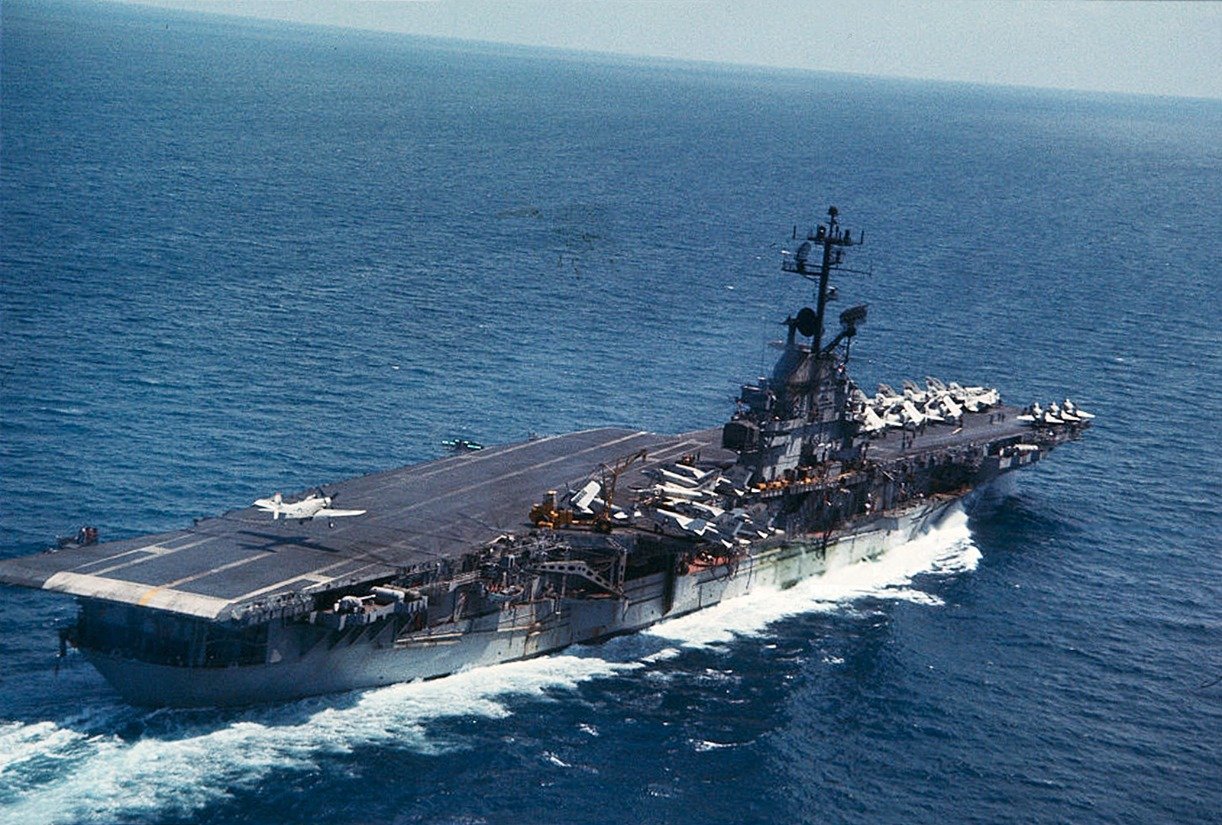U.S. Navy Essex-Class Aircraft Carrier USS Valley Forge Was the Last of Her Kind
USS Valley Forge was constructed as one of the “long-hull” Essex-class ships, known as the Ticonderoga subclass. Beginning in 1943, ships in this class featured lengthened bows above the waterline, which increased deck space and improved arcs of fire.
Summary: The U.S. military, post-World War II, significantly focused on developing advanced aircraft carriers, leading to the construction of the Essex-class ships, with the USS Valley Forge being the last to be built. As a "long-hull" member of the Ticonderoga subclass, Valley Forge featured enhancements such as a lengthened bow for better deck space and firepower. Unlike earlier Yorktown-class ships, Essex-class carriers, including Valley Forge, were not constrained by the Washington Naval Treaty, allowing for larger, more capable vessels. Valley Forge, commissioned too late for World War II, played crucial roles in the Korean and Vietnam Wars, marking her as an instrumental asset.
USS Valley Force Aircraft Carrier, Explained
The U.S. military’s prioritization of advanced aircraft carriers grew following the Second World War, resulting in two dozen Essex-class ships. As the most numerous carrier class of the 20th century, the Essex-class vessels largely remained in commission through the fall of the Soviet Union.
The last ship of the class to make it through the construction phase was the USS Valley Forge, named to honor the winter encampment of General George Washington’s Continental Army. Though Valley Forge entered service too late to deploy in World War II, the carrier was instrumental in both the Korean and Vietnam Wars.
Introducing Valley Forge and the Essex-class:
USS Valley Forge was constructed as one of the “long-hull” Essex-class ships, known as the Ticonderoga subclass. Beginning in 1943, ships in this class featured lengthened bows above the waterline, which increased deck space and improved arcs of fire.

Like her sister-ships, Valley Forge was created after Japan and Italy’s repudiation of the carrier/displacement limits outlined in the Washington Naval Treaty.
While preceding classes like the Yorktown ships were limited by this arms control treaty, the Essex class was not. Valley Forge, and her classmates, were constructed much longer, wider and heavier than the Yorktown ships. Additionally, a longer and wider flight deck also enabled more efficient flight operations aboard.
As the last Essex-class carrier to be introduced to service, Valley Forge did not receive all of the modifications incorporated on her sister ships, including the SCB-27 or SCB-125. During her service career, Valley Forge maintained her straight flight deck.
However, her armament was altered in the mid-1950s when she was converted to an anti-submarine carrier. As part of this transition, Valley Forge’s 20m Oerlikon cannon was removed.
The carrier also initially featured a battery of 12 inch 130mm/38 caliber guns, and four 40mm Bofors guns and was protected by 1.5 inches of armor across her hanger and decks.
The Valley Forge has a unique construction story. Citizens in the Philadelphia Area paid for the carrier using a whopping $76 million worth of E Bonds purchased during the Seventh War Loan Drive. She was laid down in 1943 and commissioned three years later with Capt. John W. Harris in command.
Operational history
Following her shakedown training cruise, Valley Forge joined the Pacific Fleet, flying the flag of Rear Admiral Harold L. Marin, Commander of Task Force 38. Through the end of the decade, Valley Forge deployed to Pearl Harbor, Australia and Hong Kong.
She then continued to sail to Manila, Singapore, Trincomalee, and Ras Tanura Saudi Arabia. In fact, during her stint in the Persian Gulf, Valley Forge became the largest aircraft carrier to ever transit the Suez Canal.
During the Korean War, Valley Forge became the flagship of the U.S. Seventh Fleet. The first carrier air strike during this war was notably launched from Valley Forge’s flight deck. The carrier was also extensively deployed during the Vietnam War, participating in Operation Fortress Ridge, Operation Badger Catch, Operation Swift Saber and others.
Valley Forge was officially placed out of commission in 1970. However, her storied career wouldn’t end here. In 1971, Valley Forge was used as a shooting location for the filing of the science fiction film Silent Running.
About the Author: Maya Carlin
Maya Carlin, National Security Writer with The National Interest, is an analyst with the Center for Security Policy and a former Anna Sobol Levy Fellow at IDC Herzliya in Israel. She has by-lines in many publications, including The National Interest, Jerusalem Post, and Times of Israel. You can follow her on Twitter: @MayaCarlin.


